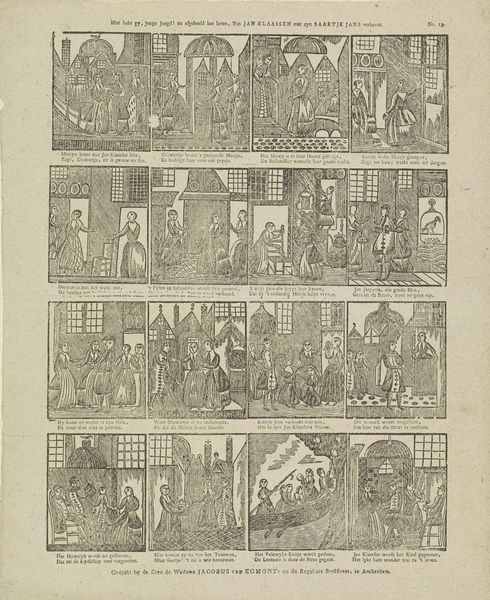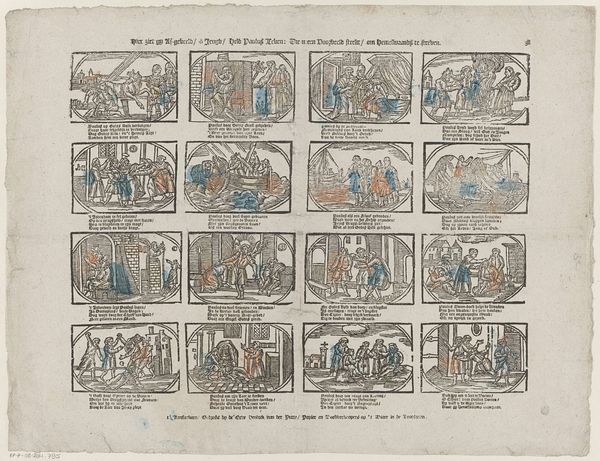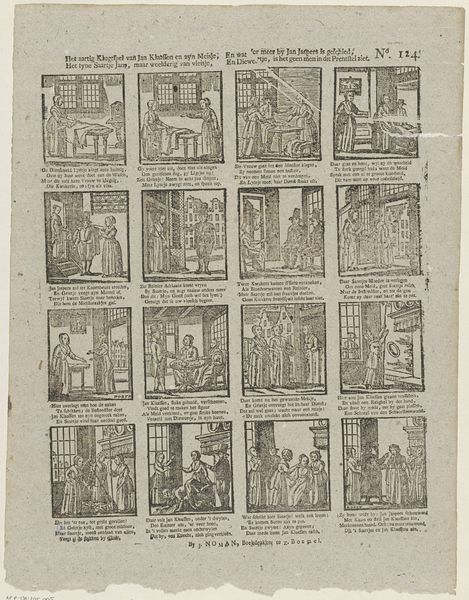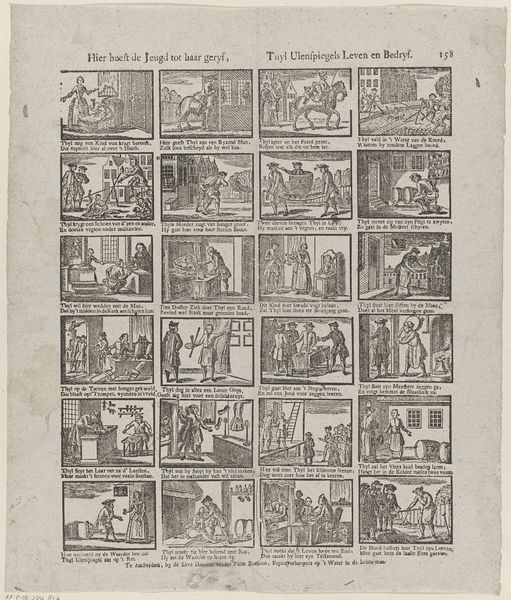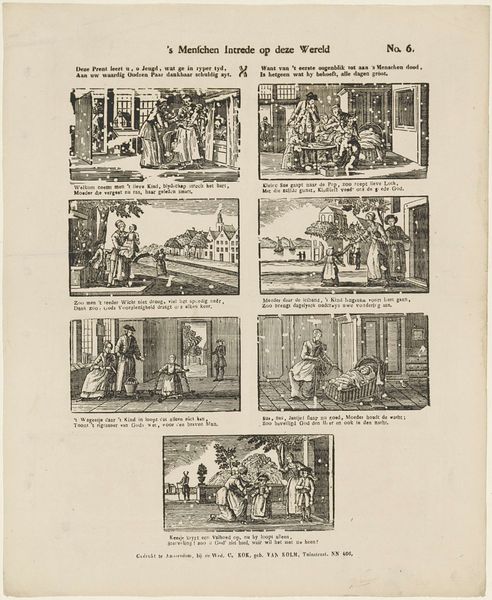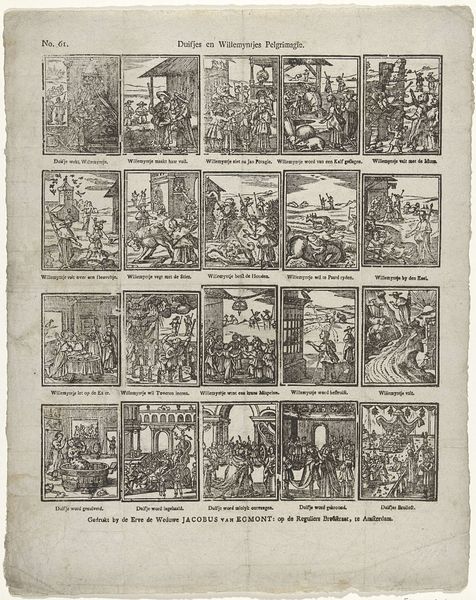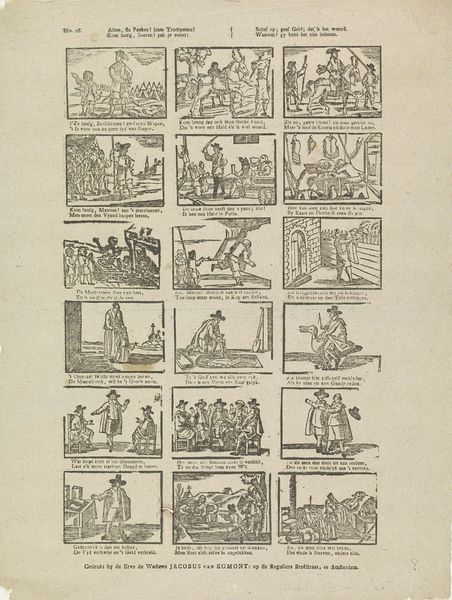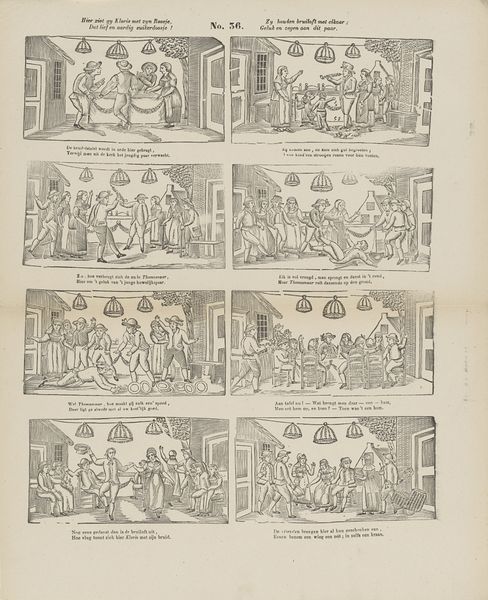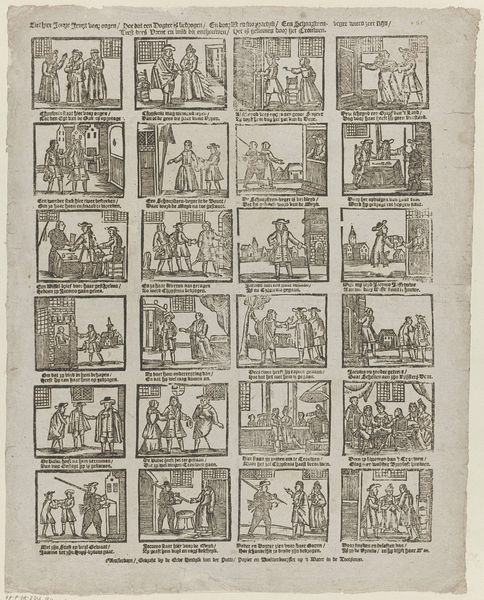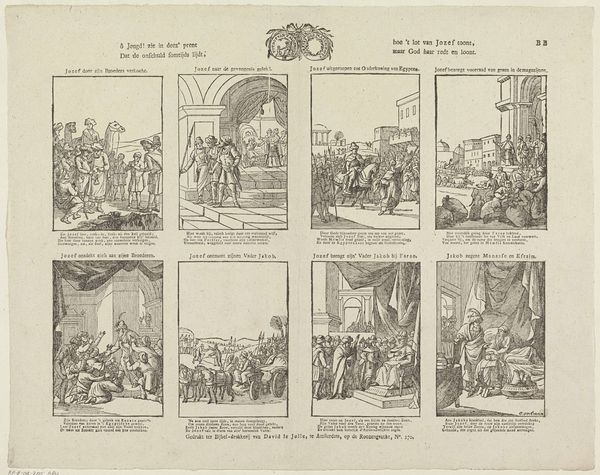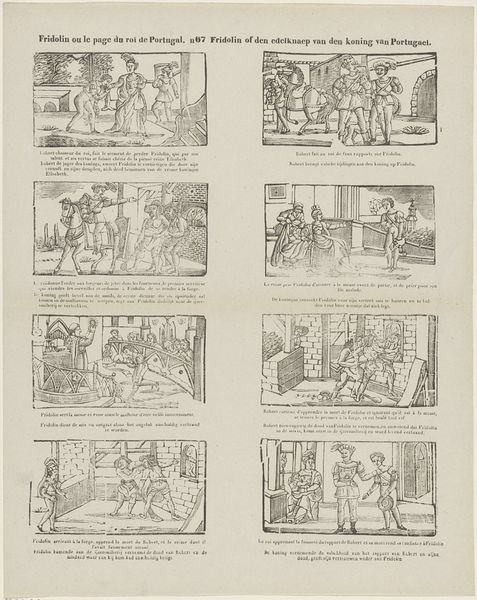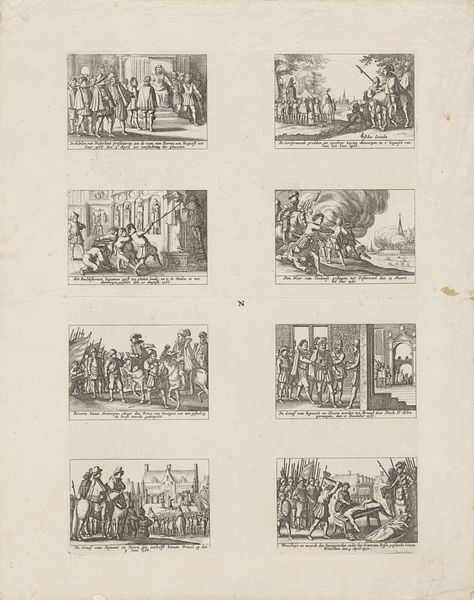
De feestgetyden, die men is gewoon te vieren, / Van jaar tot jaar, doch men heeft met vrolyke manieren / Ziet ge in dit prentgestel, ô kindren! afgebeeld, / Vermaakt 'er u dan meê, terwyl gy leest en speelt 1806 - 1830
0:00
0:00
arobyn
Rijksmuseum
print, paper, engraving
#
narrative-art
# print
#
figuration
#
paper
#
romanticism
#
comic
#
line
#
genre-painting
#
history-painting
#
engraving
Dimensions: height 391 mm, width 315 mm
Copyright: Rijks Museum: Open Domain
Curator: What strikes me immediately is the raw, almost comic feel of this print. It reminds me of a children's book, both simple and surprisingly poignant. Editor: You know, its graphic style points towards more functional, mass-produced origins. We’re looking at a print here, an engraving on paper dating roughly from 1806 to 1830 by A. Robyn and printed by L. Noman. The title translates to something like "The Feast Tides, which one is accustomed to celebrate...". The title and the serial aesthetic hints it had the intent of reaching and educating a wider population. Curator: Definitely functional, but isn't there something dreamlike about these little scenes? Each panel is a snapshot, full of everyday figures. It feels so deeply… human, imperfect in that beautiful way we stumble through life. Editor: Human indeed. This work embodies a cultural shift towards accessibility. Engravings, specifically, democratized art production and were significantly less expensive than paintings. And what’s striking about Robyn's choices is the narrative structure in these individual scenes. It seems they aimed to illustrate daily social interactions for a rising literate middle class. Each panel representing key feasts during the year. Curator: It’s that narrative aspect that intrigues me. The print captures little moments that amount to much greater cultural moments, doesn't it? This is almost folk art on paper. Editor: You’ve hit a crucial point. The choice of printmaking reveals a social commentary that challenges earlier elitist views tied with paintings in the art world, emphasizing instead the power of dissemination, consumption and the collective experience. I'd venture to say its romantic leaning also serves the popular taste for relatable art that would adorn domestic spaces. Curator: Perhaps that's what makes it so charming— its domestic intimacy, this cozy feeling of having history nestled within reach. The romance lives in the connection it creates with another person across time. Editor: Yes, a wonderful closing perspective. For me it opens questions around access and art; It showcases how craft intertwines with the art to embody broader socio-historical currents. It’s fascinating how a seemingly modest print on paper prompts us to reconsider what we label valuable or timeless.
Comments
No comments
Be the first to comment and join the conversation on the ultimate creative platform.
